Quartzy: the knitting edition
Happy Friday!

Happy Friday!
I’m Manavi Kapur, Quartz’s lifestyle and culture reporter from New Delhi, India.
As northern India weathers one of the harshest winters in over a century, memories of winters past can supply us with some much-needed warmth. Knitting, a passion and tradition in my family, was a highlight of the short but severe winters in Delhi during my childhood. In the absence of central heating, the wool yarn and knitting needles were a nifty way to thaw one’s fingers.
Knitting, until recently, was a vocation shared by grandmothers and their grandchildren, something you remembered fondly but not something we did as adults. But this changed in the past couple of years, and while its reemergence is not something I can quantify with statistics, I began seeing far more Facebook posts and Instagram stories about knitting, at least from kindred, vintage-loving spirits.
There may not be enough to qualify as a revival—not like in the US, at least, where celebrity endorsements and movements like Stitch ‘n Bitch have ensured knitting stayed in the spotlight. But there were enough to give me the courage to dig out my own knitting needles and yarn and let my muscle memory do its magic.
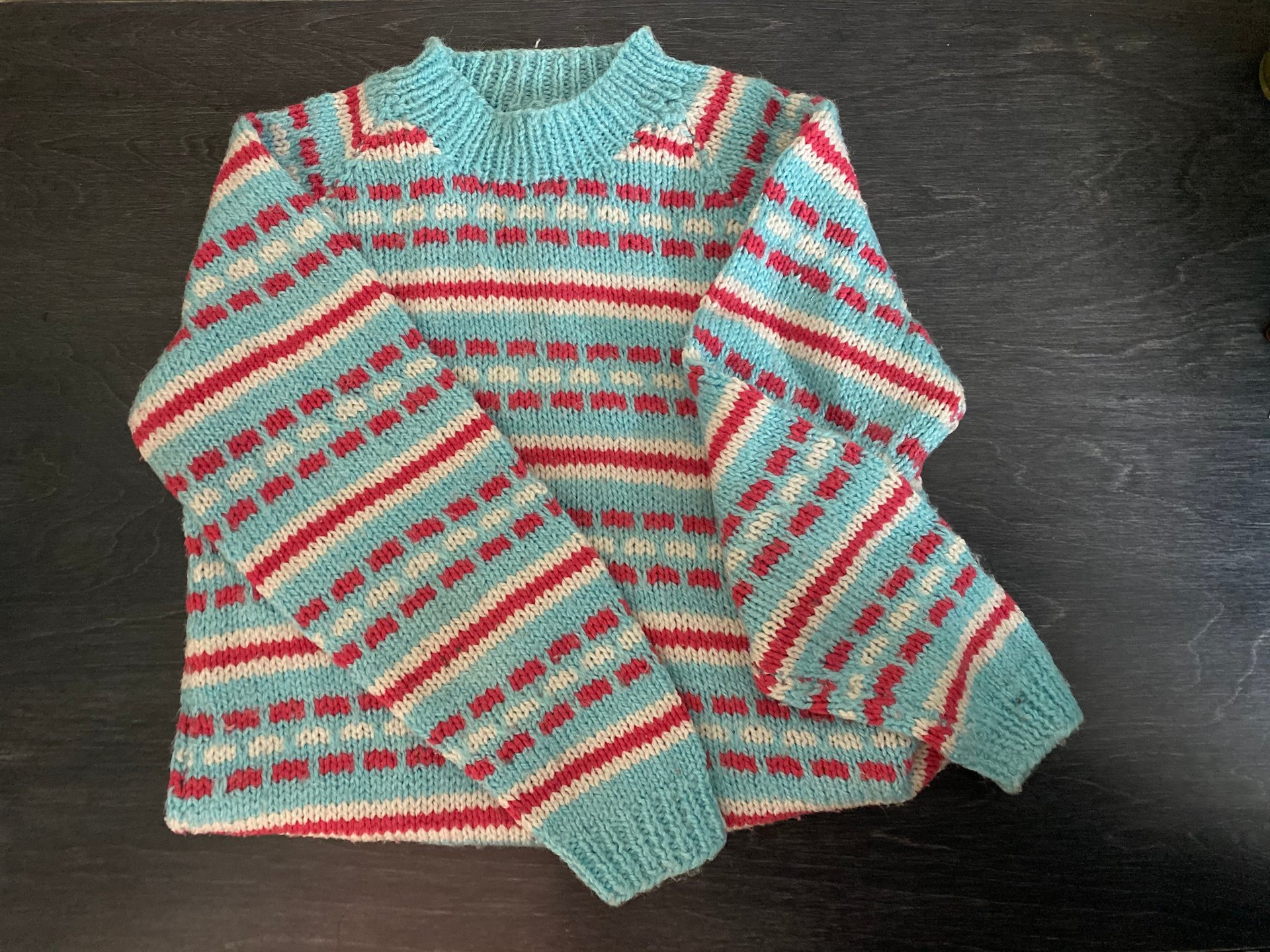
First, recap. I found myself staring at the two needles and the skein of yarn, with one part of my brain telling me I knew what to do, and the other woefully silent.
In fits and starts, I remembered that to begin, I had to make a ball out of the yarn. That brought back warm memories of sitting with my arms out front, yarn hanging on them, as either my aunt or my grandmother made neat balls. Each winter, we would pack ourselves into our small car, drive to the neighborhood market, and pick out favorite colors for our sweaters, caps, and mufflers that year. As the kids grew older, we were entitled to ask for specific cable patterns and color schemes.
There were hilarious memories of our pristine white family dog snared in a web of bright red wool, feeling particularly annoyed and snapping at everyone trying to detangle her. There was also the case of another family dog running away with one painstakingly rolled ball and several angry adults chasing after him.
Knots next. I decided to start small and knit a simple scarf. The biggest advantage is you don’t need too many loops because it’s not as broad as a sweater. You just keep knitting till you get the length you want, and then there’s no major knitting prowess involved at the end.
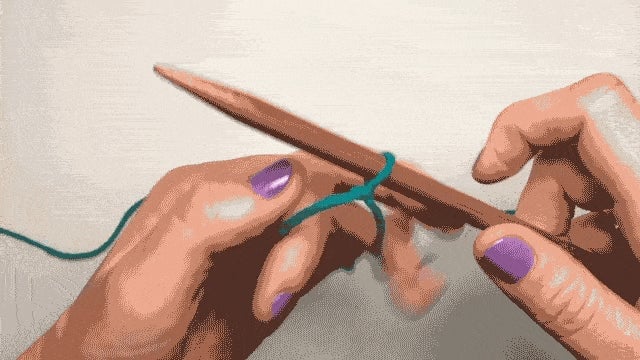
Knitting isn’t demanding, nor does it require particularly sophisticated skills. People have been knitting for millennia, and the collection of the Victoria & Albert Museum, in London, has a pair of knitted socks, dated between the 3rd and 5th centuries. Entire women’s collectives have been built around knitting, and some still continue to thrive in India. My grandmother, even with her diminished eyesight, could knit a sweater with three different colored spools. An aunt could hold an entire conversation and still have a pair of beautiful, soft, fluffy socks ready by the end of the evening.
If knitting was a favored activity of our grandparents’ generation, seniors today are demanding more in entertainment and amenities, even as they move out of their homes. Quartz’s Lila MacLellan recently faced the modern rite of passage of helping her parents make the transition into assisted living. In this week’s Field Guide, she wrote about what she learned.
Knitting once was a staple in most homes in northern India, especially in Himalayan states like Uttarakhand and Himachal Pradesh, where it’s colder than other parts of the country. In rural pockets, knitting still is second nature to most communities. The designs there are more rugged, given the pure yak and sheep fibers they use. In the middle-classes, though, sartorial trends such as cardigans and pullovers were introduced by the British Empire, which made knitting a habit for most women. All of my family members had at least one solid-colored sweater with large cable patterns.
But despite growing up in a household of knitters, I never truly succeeded at the craft. Every year, I would learn how to make those initial knots and diligently, every year, my brain would hit refresh once knitting season ended. After my grandmother’s death in 2006, I could never find the courage to pick up the needles again.
Thank heavens for YouTube which refreshed my memory. Once I started the first loop, it was like I was sitting beside my grandmother, both of us laughing at how I’d gloriously failed at remembering that basic first step, again. Hopefully, this time, I won’t wipe my brain clean once winter ends.
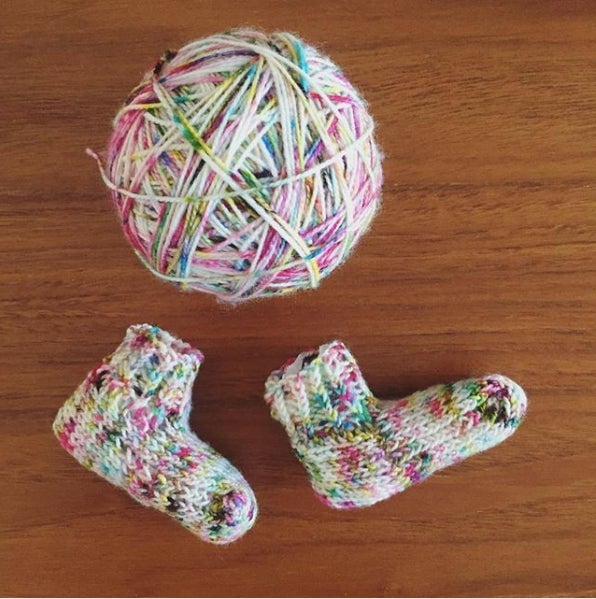
Just start. Don’t overthink it like I did for years. Just pick up the needles and start. You’ll get somewhere.
Knitting has a basic knit stitch, and a purl stitch. The simplest way to get a clean weave is to do one whole row of loops in knit, and then the next in purl, and so on. Once you gain some amount of confidence, you can bring in variations like knit-knit, purl-purl, knit-purl, knit-knit-purl, etc.
I would suggest starting with a thick yarn and fat needles, what my colleague and avid knitter Jenni Avins’s mother called “telephone poles.” These, as Jenni says, can help you see your mistakes clearly. And going by her knit marvels, I would listen to her.
Brave new patterns. Indian homes in the 1970s, ’80, and ’90s often had scores of women’s magazines featuring tips on knitting. These would have beautiful patterns and variations, and the latest cuts and collars one could replicate with a yarn and two long needles. An old Pringles tube at my childhood home contained metal knitting needles of varying thicknesses, kept neatly in the same cupboard with these beautiful magazines.
Us kids were often allowed to pick out design from these catalogues, under the guidance of a hawk-eyed parent watching for sticky fingers or jerks that could tear the pages. I looked for these recently, but they seemed to have been boxed and placed in storage years ago.
Perhaps once I develop greater confidence, I can finally try my hand at knitting a sweater with cables—those large beautiful patterns I’m told are easy, though I refuse to believe it. Thankfully this time, I have books, Instagram handles and YouTube channels specifically made for dummies like me.
I hope you find a DIY activity that calms you and brings back warm memories like knitting does for me. Have a great weekend!

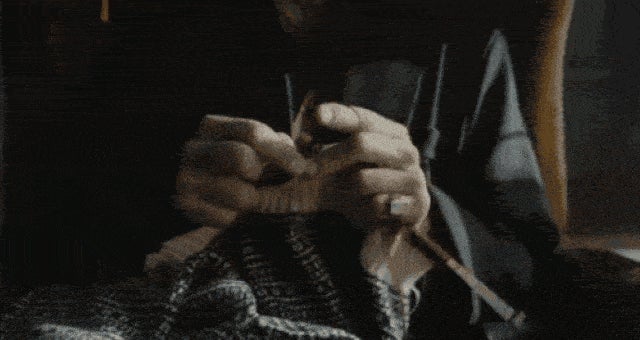
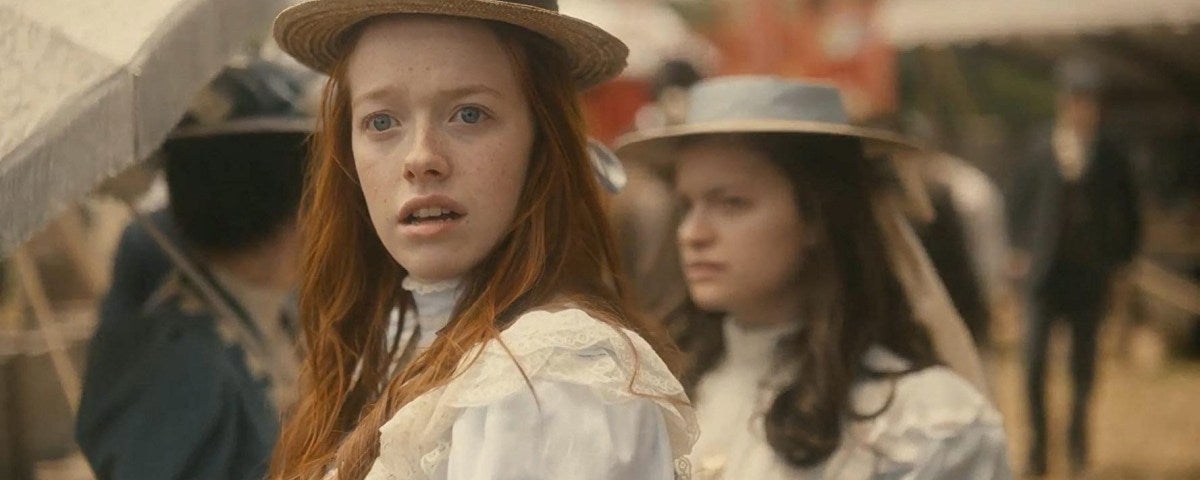
I just finished watching Season 3 of Anne with an E, the Netflix adaptation of Anne of Green Gables. I recently discovered the series thanks to my colleague Niharika Sharma (yes, I was late to the party as usual) and I basically binge-watched the previous two seasons right before the release of the current one. Set in the last decade of the 19th century, the show is refreshingly progressive and surprisingly feminist, and I absolutely adore everything about Anne. I can’t reveal more at the risk of giving out spoilers, but let’s just say Anne has found home, again, in so many new ways. And now I cannot deal with knowing there won’t be a fourth season.